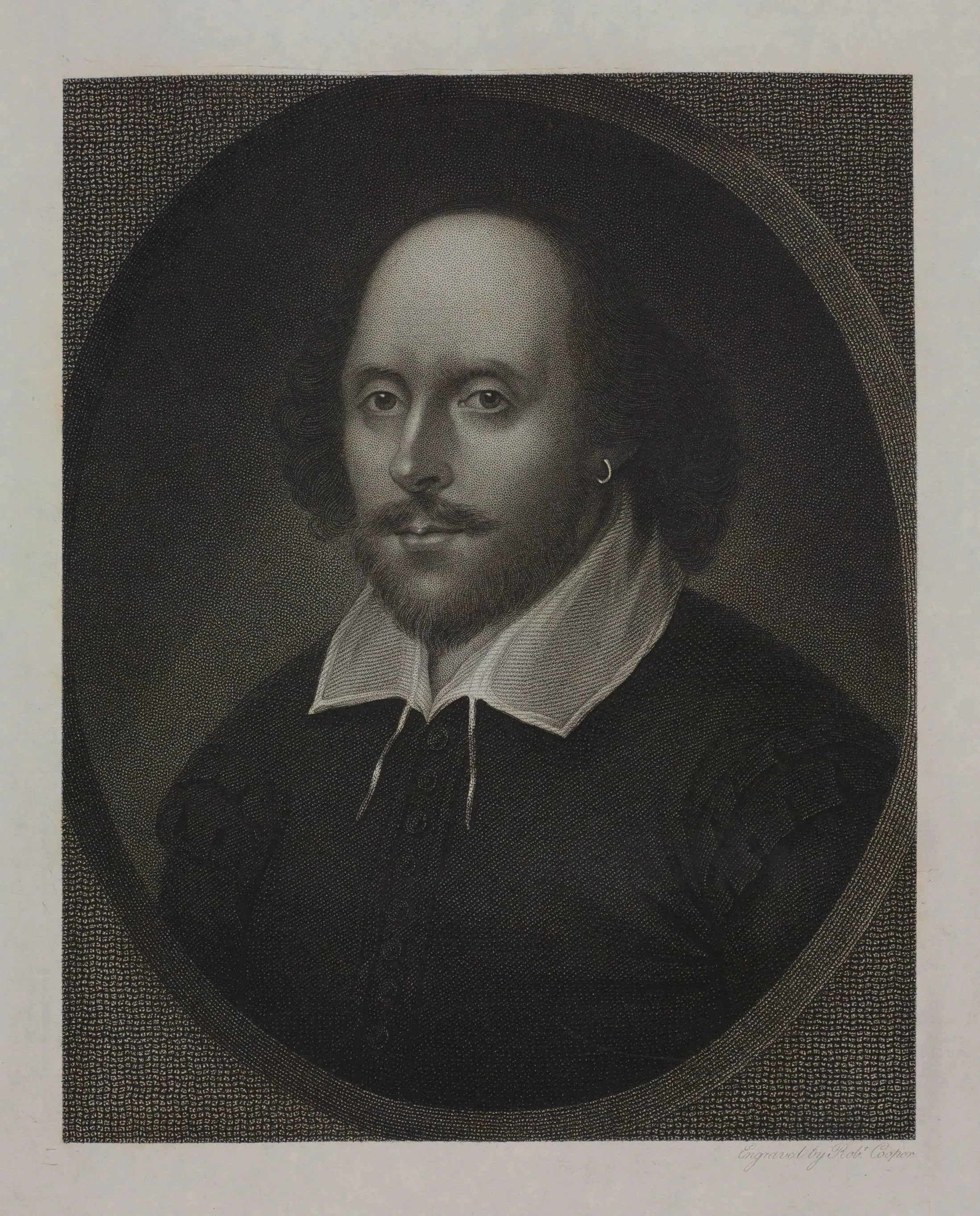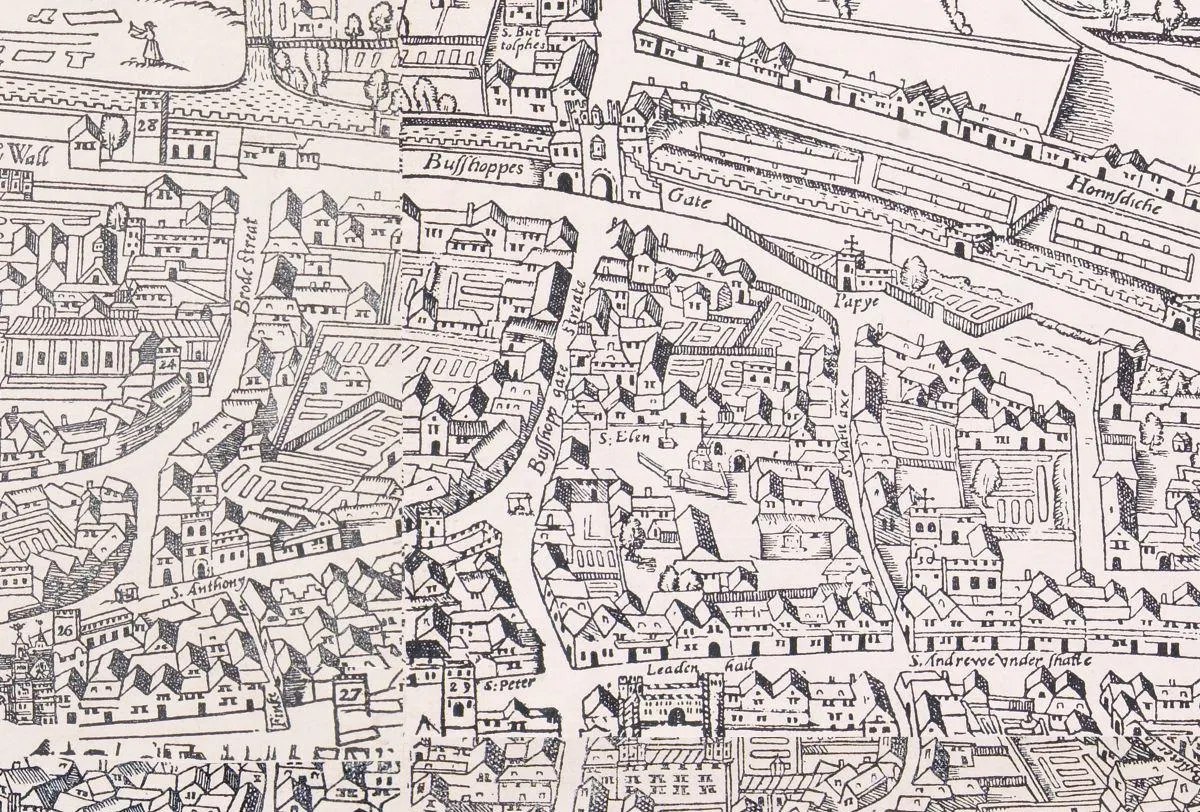Shakespeare in London
On display from 30 June to 2 October 2025
Visit The London Archives this summer to see some of our rarely displayed treasures relating to William Shakespeare. These include a title deed from 1613 showing how Shakespeare bought a property in Blackfriars in the City of London – a document that is one of only six in the world that contains his signature.
Book your free ticketYou can see our Civitas Londinum map, one of the earliest representations of London. This was printed in the early seventeenth century and gives us a rich visual record of the London Shakespeare knew.

Other highlights
Shakespeare’s artistic legacy can also be seen in the poet John Keats’ 1820 copy of Shakespeare’s plays, which will accompany these items. Owned by Keats during his time living in Hampstead, this precious volume includes Keats’ personal annotations.
The display is located in the Information Area on the first floor at The London Archives.

Discover more content relating to William Shakespeare on the London Picture Archive.
Shakespeare on London Picture ArchiveShakespeare's signature
The property deed with Shakespeare’s signature at TLA bears one of only six of the famous playwright’s identified and authenticated signatures in existence. Like the deed itself, it is not straightforward to decipher – Shakespeare wrote in a script called secretary hand which featured many letter forms unfamiliar to us.
Famously, it is said that Shakespeare used a different spelling for his name in each of his signatures. It wasn’t until 1755 that Dr Samuel Johnson published his famous 'Dictionary of the English Language', which standardised the spelling of many English words. Until then, a complicated surname like 'Shakespeare' could easily be spelled in different ways.
But it was also common practice, especially in legal documents, to abbreviate commonly used words as well as personal names. Such abbreviations were usually marked by a horizontal stroke above the abbreviated word or by uppercase letters, and could indicate an abbreviation of one or more letters, and the end or in the middle of a word.
Shakespeare’s signature on the TLA deed reads William Shakspēr. While the initial S, the faded long s, and the p can be easily recognised, the loopy h and k, the a with a long upward stroke, and the 'backwards' e are the less familiar, typical examples of secretary-hand letter forms. The wavy stroke above the e indicates an abbreviation. What letters exactly Shakespeare meant to abbreviate, we will never know, but judging by his other signatures, it would have most probably been the final e.
Other Shakespeare signatures
All of Shakespeare’s six authenticated signatures date from the last four years of his life and all appear on four legal documents:
1) one signature (Wīllm Shakp) on a deposition in the Bellott v Mountjoy law suit, dated 11 May 1612 – at the National Archives, Kew
2) one signature (William Shakspēr) on the title deed for the purchase of a house in Blackfriars, London, dated 10 March 1613 – this is the TLA copy (formerly at the Guildhall Library)
3) one signature (Wm Shakspē) on the mortgage of the same Blackfriars house, dated 11 March 1613 - at The British Library
4) three signatures (William Shakspere, Willm Shakspere, By me William Shakspeare), one on each page, on his Last Will and Testament, dated 25 March 1616 – at the National Archives, Kew
There is also a seventh candidate for a Shakespeare signature, coming from three sheets of additions to the play Sir Thomas More, thought to be the only known literary manuscript in Shakespeare’s hand. It dates from the late sixteenth or early seventeenth century, and is a subject of much scholarly debate. It is kept at the British Library (Harleian MS. 7368).
Further reading
For more information about the signatures, please see Six Shaky Signatures | Shakespeare Oxford Fellowship or Shakespeare's Handwriting: A Study, the classic monograph by Sir Edward Maunde Thompson (Oxford, 1916)